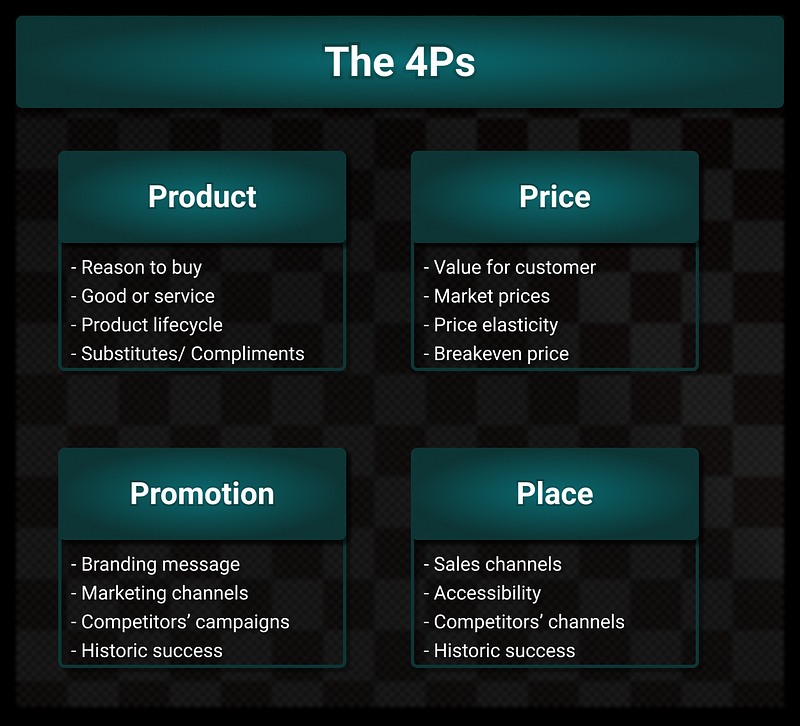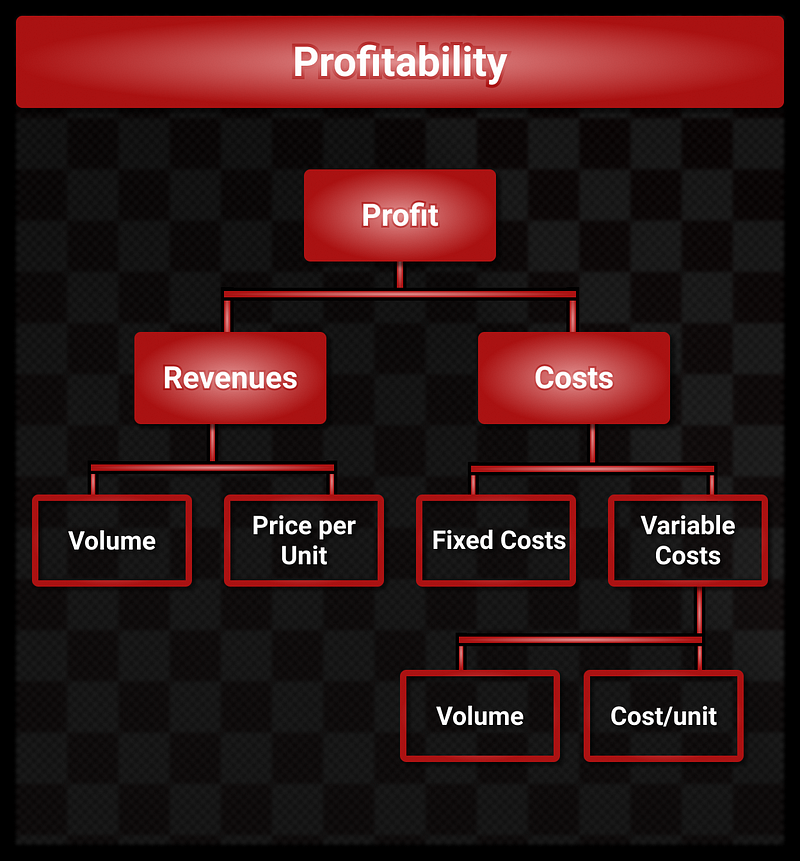5 Strategy Frameworks All Entrepreneurs Should Know
Jul 28, 2020
5 Strategy Frameworks All Entrepreneurs Should Know
With infographic cheatsheets

Some entrepreneurs feel framework is a dirty word and rely purely on instinct for decision-making. Yet when it doesn’t work out, hindsight can be a nightmare.
The management consulting industry is worth over $250bn and is built on the foundation of simple frameworks combined with experience. Frameworks are never a guarantee of success but they are a useful way to sanity test ideas in a logical manner.
The structure forces us to take a holistic approach which includes looking at the parts we may find less exciting. It’s easy to have blind spots and miss red flags when we are consumed by our brilliant ideas but early detection can save us a lot of pain. Likewise, we can go down the wrong path because we didn’t spend a little bit of time to look around and see a much more lucrative opportunity.
Simply taking half an hour to use a framework can provide a huge return, as even learning one lesson will be invaluable before spending your life savings on your business. I’m covering 5 of the most useful frameworks:
- The 3Cs
- The 4Ps
- Porter’s 5 forces
- Profitability
- Capacity change

3Cs is a high-level framework useful in many scenarios. It’s about determining whether a company is aligned with the market and how to make it succeed.
- Customers — Have a clear idea of who your customers are. How can you segment them and are some customers more desirable than others? Are customers changing their preferences? Will price changes make a big difference to them? For a tool company, there’s a big difference between the needs of construction companies and DIYers.
- Company — Define the company’s purpose clearly. What are you selling? What skills does your company have that makes it worthwhile? What can you do that no one else can? What sales channels are you currently using? You must look at your profitability and financial situation too. There’s a big difference in strategy between a chain of 2000 restaurants and a standalone restaurant.
- Competition — Unfortunately, your company doesn’t exist in a vacuum so it’s critical to know what your competitors are doing. If their product is superior to yours in every way, it might be time to pack it in. Who’s growing the fastest and why? Are there any changes affecting the entire industry? It’s a bad idea to enter the VHS market now if you’re looking for exponential growth.

The 4Ps are well known to marketers everywhere. This is about how to take a product to market and keep it selling well.
- Product — A great product should sell itself. There has to be a clear reason people will want to buy and bear in mind the difference between selling something and service. Also think about the life of the product, what it can be substituted with, and what products complement it. A cheap product people only need to buy once makes it difficult to sustain the business.
- Price — Depending on the industry, the price can be the most important choice. In hyper-competitive industries where unit costs are high, you can be left with a dilemma. See how to make your product premium through promotion. Many clothing brands have the same quality but charge higher because of name value.
- Promotion — How are you going to convey the message to consumers to make them believe in the product? What channels will you use and what channels are working for your competitors? Instagram may be critical for makeup brands but negligible for B2B companies.
- Place — Where will you sell your product? There are more and more online-only companies but even here, it’s important to choose the right site to use for hosting. Examine where your competitors are getting the most traffic.

Porter’s 5 forces are used to determine the intensity of rivalry within a market. At its core, you don’t want to enter a market with high intensity. An industry where you can be one of the few dominant players is ideal.
- Customer’s bargaining power — In some industries, customers may have huge bargaining power. Imagine you start a large import business for bananas. There are only a few large players like Walmart who can bulk buy your product. But if you were providing a unique product then customers wouldn’t have a choice but to buy from you.
- Supplier’s bargaining power — On the flip side is the suppliers you use to provide your product. If only one company makes a specific part you need then you may be at their mercy. Let’s say you make a breakfast bar but only one company has the right to import a raw ingredient, they can charge you what they like.
- Threat of substitutes — Customers’ needs can sometimes be met by completely different products. If you run a video streaming service and raise prices, people may decide to play video games instead.
- Threat of new entrants — The potential for competitors to enter is a big part of the dynamics. When barriers to entry are low, if a company tries to raise its prices then others will enter attracted by the profits. This keeps some industries in check.
- Intensity of existing rivalry — This is where you assess the competitors currently in the market. How aggressive are they? How different to you are they? Ideally, you want to carve your niche so your competition can’t easily take customers.

The most straightforward framework but it’s amazing how often people overcomplicate it. To survive in the long run, you need to make a profit so if you’re not doing so, you need to identify the root cause.
- Revenue = Price x Volume — This is the demand side of the equation. Is your price too high so volumes are too low? Are you priced correctly but need to improve your promotion? It’s useful to compare to competitors for benchmarking.
- Costs = Fixed Costs + Variable Costs — Compare your cost structure to similar companies. If most of your costs are fixed, would you benefit from decreasing prices to make use of your lower marginal cost?
- Variable Costs = Volume x Cost per Unit — Variable costs can further be broken down. When most of your costs are variable, can you make investments to bring down the unit cost?

Capacity change is a problem facing many entrepreneurs. It’s a big decision to sign a new contract when the demand might not materialize.
- Demand — Is industry demand strong enough to support an increase in capacity? Just because you are selling 1 million bikes, it doesn’t mean a million more people want one. It’s also important to check the demand for your product and similar products aren’t falling even though the market is growing.
- Supply — If demand is increasing, we need to be sure other companies aren’t increasing their supply significantly to match it. We can waste money trying to compete when a competitor is using technological advancements to produce far cheaper than we can.
- Cost of expansion — Knowing exactly how much it will cost to expand can save embarrassment. It’s easy to underestimate all the hidden costs. You must decide if expansion is the best use of these resources or whether the money could be used more productively elsewhere.
This is an overview of 5 frameworks but there is much more detail if you want to delve into one framework in particular for your business. After assessing your company with the framework, you can form a strategy to forge your path forwards. I’d recommend asking others to challenge your decisions and stress test your assumptions. Good luck and I hope this will help you plan!

